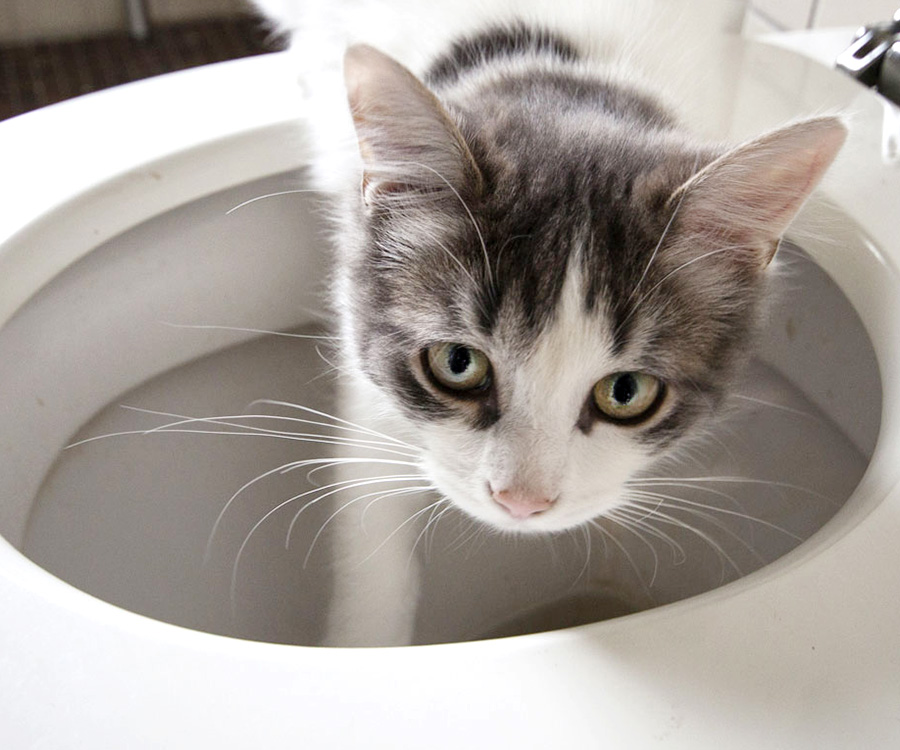Important Reasons Why Animal Waste Has to Never Be Flushed Down the Toilet
Important Reasons Why Animal Waste Has to Never Be Flushed Down the Toilet
Blog Article
This great article listed below relating to Should you flush animal waste down the toilet is really enjoyable. Read on and draw your own personal ideas.

When it pertains to disposing of waste, especially animal waste, many people typically resort to the practical choice of flushing it down the bathroom. Nevertheless, this relatively simple solution can have serious repercussions for the environment and public health. In this article, we'll discover why flushing animal waste down the toilet is a negative idea and provide alternative methods for proper disposal.
Introduction
Appropriate garbage disposal is crucial for preserving ecological sustainability and public health. While it may seem harmless to flush animal waste down the toilet, it can result in different problems, both for the setting and human well-being.
Risks of flushing animal waste
Ecological impact
Flushing pet waste introduces harmful germs and pathogens right into rivers, which can negatively impact aquatic environments. These pathogens can contaminate water sources and damage marine life, interfering with fragile environments.
Public health problems
Pet waste has harmful microorganisms such as E. coli and Salmonella, which can posture significant wellness risks to humans. Flushing animal waste down the toilet can infect water materials, leading to the spread of diseases and infections.
Alternatives to flushing
As opposed to flushing pet waste down the toilet, there are numerous alternate disposal methods that are much more eco-friendly and sanitary.
Composting
Composting pet waste is an environmentally friendly way to take care of it. By composting, raw material is broken check here down right into nutrient-rich soil, which can be utilized to feed gardens and plants.
Garbage dump disposal
Getting rid of pet waste in a land fill is one more alternative. While not as eco-friendly as composting, it is a much safer option to flushing, as it avoids the contamination of water sources.
Pet dog garbage disposal systems
There are specialized pet dog garbage disposal systems offered that securely and hygienically get rid of pet waste. These systems usually use enzymes to break down waste and remove smells.
Steps to correct pet garbage disposal
To make sure appropriate disposal of animal waste, follow these steps:
Scooping and bagging waste
Regularly scoop and bag pet waste making use of eco-friendly bags. This stops waste from polluting the environment.
Making use of assigned waste bins
Dispose of bagged pet waste in assigned waste bins, such as garden compost bins or land fill bins. Stay clear of flushing it down the bathroom at all prices.
Cleansing can and pet dog areas consistently
Regularly tidy can and family pet areas to avoid the buildup of waste and microorganisms. Usage pet-safe cleansing items to maintain hygiene.
Benefits of correct disposal approaches
Embracing correct disposal methods for pet waste uses numerous advantages:
Reduced environmental pollution
Correct disposal approaches lower the threat of environmental pollution, shielding rivers and ecological communities from contamination
Lessened risk of water contamination.
By staying clear of flushing animal waste down the bathroom, the risk of water contamination is significantly reduced, protecting public health.
Improved sanitation and hygiene
Correct disposal approaches advertise far better hygiene and hygiene, producing a safer setting for both people and pets.
Conclusion
In conclusion, purging pet waste down the toilet is dangerous to the environment and public health. By adopting alternative disposal techniques and adhering to correct waste management methods, we can decrease the negative effect of pet waste and add to a cleaner, healthier world.
What To Do With Dog Poo – The Do's And Don'ts Of Disposing Of Faeces
Dog poo bins
Some councils provide dedicated dog waste bins in popular dog-walking areas that can take dog poo that has been bagged but you can legally dispose of dog waste in any public litter bin, as long as it is securely bagged. This also applies to your wheelie bin at home.
Do not flush
Water companies do not recommend flushing dog faeces down the toilet because certain parasites can survive the water processing treatment and are potentially harmful to humans. You should also never consider flushing dog poo that has been bagged down the toilet as the bags will not break down and instead create severe blockages in the sewage system.
In the woods
The Forestry Commission promotes a ‘stick and flick’ method for dealing with waste in the woods. This means finding a stick and using it to flick any poo from off the path so that it is out of the way of other walkers. You could also bury it as long as it is not in an area where there might be livestock.
Livestock
Parasites found in dog poo can be transmitted to livestock if they inadvertently eat infected faeces that has been left on grazing land. This could result in the death of sheep or abortion in cattle so you should always make sure you pick up your dog’s waste in fields where livestock could be present.

Regularly tidy can and family pet areas to avoid the buildup of waste and microorganisms. Usage pet-safe cleansing items to maintain hygiene.
Benefits of correct disposal approaches
Embracing correct disposal methods for pet waste uses numerous advantages:
Reduced environmental pollution
Correct disposal approaches lower the threat of environmental pollution, shielding rivers and ecological communities from contamination
Lessened risk of water contamination.
By staying clear of flushing animal waste down the bathroom, the risk of water contamination is significantly reduced, protecting public health.
Improved sanitation and hygiene
Correct disposal approaches advertise far better hygiene and hygiene, producing a safer setting for both people and pets.
Conclusion
In conclusion, purging pet waste down the toilet is dangerous to the environment and public health. By adopting alternative disposal techniques and adhering to correct waste management methods, we can decrease the negative effect of pet waste and add to a cleaner, healthier world.
What To Do With Dog Poo – The Do's And Don'ts Of Disposing Of Faeces
Dog poo bins
Some councils provide dedicated dog waste bins in popular dog-walking areas that can take dog poo that has been bagged but you can legally dispose of dog waste in any public litter bin, as long as it is securely bagged. This also applies to your wheelie bin at home.
Do not flush
Water companies do not recommend flushing dog faeces down the toilet because certain parasites can survive the water processing treatment and are potentially harmful to humans. You should also never consider flushing dog poo that has been bagged down the toilet as the bags will not break down and instead create severe blockages in the sewage system.
In the woods
The Forestry Commission promotes a ‘stick and flick’ method for dealing with waste in the woods. This means finding a stick and using it to flick any poo from off the path so that it is out of the way of other walkers. You could also bury it as long as it is not in an area where there might be livestock.
Livestock
Parasites found in dog poo can be transmitted to livestock if they inadvertently eat infected faeces that has been left on grazing land. This could result in the death of sheep or abortion in cattle so you should always make sure you pick up your dog’s waste in fields where livestock could be present.

We are very excited about 10 Things You Should Never Flush Down The Toilet and I am assuming you liked the entire piece. Don't hesitate to take the opportunity to share this content if you appreciated it. Thanks for your time invested reading it.
Click Here! Report this page